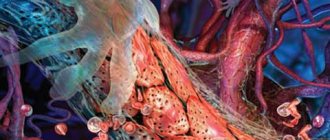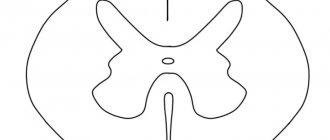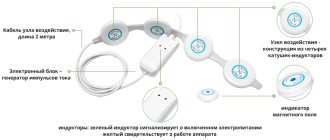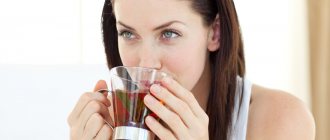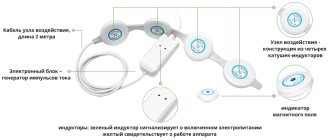- High results, no side effects
- Treatment without pills and surgeries
- Initial consultation with a doctor is FREE
Tibetan medicine considers vegetative-vascular dystonia as a disorder of the Wind system. It is responsible for nervous regulation and the cardiovascular system. Therefore, the symptoms of VSD are associated primarily with vascular and nervous (autonomic) disorders.
For disorders of the Wind system, Tibetan medicine recommends oily, sweet foods. This means that it is better to forget about low-calorie diets based on raw vegetables, herbs and fruits. These products have a cooling effect, and the Wind system has the nature of cold. Therefore, they aggravate the symptoms of vegetative-vascular disorder and add new ones to them - insomnia, irritability, anxiety. Low-calorie diets and raw food diets for VSD can provoke the development of neuroses or mental disorders, as well as complications in the form of panic attacks.
Fats
Oily foods are foods that are high in fat. But not all fats are equally beneficial for VSD. The best butter is ghee. This is a universally useful product for any disorders of the Wind system, so it should take a leading place in the diet. Butter is less healthy. Sunflower and sesame oils warm, so they are completely acceptable. Olive is cooling, but good for the nervous system. But it is better to exclude corn and rapeseed oils.
Blood vessels are connected not only with the Wind system, but also with the Mucus system, and it does not like animal fats. Therefore, they should be consumed with caution (although fatty meat is not prohibited). And under no circumstances should you drink animal fats with chilled drinks.
Nutrition rules for VSD
The diet for VSD depends on the patient’s weight, manifestations of digestive dysfunction, and the patient’s gastronomic preferences. Particular attention is paid to the diet of overweight patients. Rehabilitation specialists offer an individual weight loss program. It includes not only dietary nutrition, but also physical therapy, some sports, and a water regime.
For all patients suffering from changes in blood pressure, doctors recommend:
- streamline your diet (meals should be taken at approximately the same time, eat at least 6 times a day in small portions);
- limit the consumption of fats and easily digestible carbohydrates;
- avoid fried foods, smoked foods, fast food;
- limit alcohol consumption;
- give preference to foods that are sources of fiber (whole grain pasta, vegetables, leafy greens, legumes, fruits, nuts, oatmeal, bran, seaweed);
- add linden blossom, hop cones, peppermint or lemon balm leaves to the tea brew (they regulate hypothalamic-visceral interactions, normalize sleep, and reduce irritability).
In case of hypertensive form of VSD, you should:
- limit coffee consumption to 2-3 cups per day, replace strong tea or coffee with cocoa, which contains flavonol, which reduces blood pressure;
- reduce the consumption of alcoholic beverages, give preference to red wine, which contains antioxidants;
- avoid dishes that stimulate the central nervous system (rich fish and meat broths);
- reduce the daily amount of table salt to 4–6 g, not using it when cooking, but adding salt to ready-made dishes, or using hyposodium salt and its potassium substitutes;
- increase in the diet the proportion of foods that are sources of potassium (eggplant, baked potatoes, apricots, paprika, grapes, tangerines, cottage cheese) and magnesium (buckwheat, nuts, wheat germ, bran, sesame).
For patients suffering from the hypotonic type of VSD, nutritionists recommend eating foods rich in vitamin C and drinking rosehip decoction. They should avoid fasting diets and fasting days. Food should be taken every 3 hours in small portions. It is necessary to drink at least 1.5 liters of water per day, since fluid is necessary to maintain a sufficient volume of circulating blood.
Products should contain large amounts of ascorbic acid. There is a lot of it in black currants, gooseberries, bell peppers, citrus fruits, sea buckthorn, rutabaga. It is necessary to use fruits and vegetables with bioflavonoids, which improve the elasticity of blood vessels (beets, paprika, oranges). Don't forget about leafy greens, dill, and celery. Their essential oils dilate blood vessels. Freshly squeezed juices from these vegetables and fruits are beneficial. It is not recommended to use tonic spices (turmeric, ginger, cinnamon, chili pepper) in the preparation of hot dishes, desserts, side dishes, and baked goods. Knownly salty foods should be avoided.
Vegetables
Most vegetables have a sweet taste and are generally useful for VSD, but only after heat treatment and with the addition of ghee. These are primarily carrots, pumpkins, and potatoes.
The best oily product for VSD is fatty fish. Any, but especially sea. It could be salmon, mackerel or herring. You need to eat oily fish regularly. It warms (useful for Wind, Mucus), has a sweet taste and is ideal for nutrition in case of vegetative-vascular dystonia in any form - boiled, stewed, baked, fried. But not in dried form, since dry, light foods are harmful to the Wind.
Vegetative-vascular dystonia: symptoms and treatment in adults
The term VSD is used in their practice only by doctors from CIS countries; in the West, such a disease does not exist. In this regard, some confusion arises. Some experts do not recognize the existence of vegetative-vascular dystonia in adults, while others, on the contrary, consider it a conditional nosological form. The complex of symptoms and causes of dystonia are extensive, so the examination must be comprehensive and qualified. Still, in most cases, the syndrome is not associated with any serious disease, but is a sign. To find out whether it is possible to get rid of vegetative-vascular dystonia forever, you need to know its symptoms and current treatment regimens, including folk remedies. It is these aspects of VSD in adults that we will consider in the article. Classification To date, a unified classification of VSD has not been developed. According to various authors, autonomic dysfunction differs according to a number of the following criteria: 1. Mixed type. It occurs when there is a conflict between parasympathetic and sympathetic. This looks like a struggle for leadership in the nervous system and this is also not normal. 2. Hypotonic type. If the parasympathetic nervous system significantly predominates throughout the day, the body is filled with energy, but cannot use its strength, depression, hypotension, etc. occurs. 3. Hypertensive type. If the sympathetic nervous system predominates throughout the day, a person feels palpitations, a feeling of fear, the body quickly gets tired, sleeps poorly, the parasympathetic system cannot cope, and strength is not restored. Based on the nature of the attacks that complicate the symptoms of vegetative-vascular dystonia, sympathoadrenal, vagoinsular and mixed crises are distinguished. Mild crises are characterized by monosymptomatic manifestations, occur with pronounced vegetative changes, and last 10-15 minutes. Crises of moderate severity have polysymptomatic manifestations, pronounced vegetative changes and last from 15 to 20 minutes. Severe crises are manifested by polysymptoms, severe vegetative disorders, hyperkinesis, convulsions, attacks lasting more than one hour and post-crisis asthenia for several days. Causes Why does VSD occur, and what is it? Vegetative-vascular dystonia is a disorder of the autonomic nervous system. The ANS is responsible for maintaining internal balance in the human body, influencing all organs and organ systems. Disturbances in the functioning of the ANS most often manifest themselves in the form of dysfunctions of blood circulation, digestion, and heat exchange. In adults, the prevalence of the syndrome is high in the age group of 20-30 years, while in women manifestations of dystonia are more common than in men. In old age, the likelihood of developing VSD decreases sharply. Among the external factors that contribute to the appearance of signs of VSD are: • severe stress, depression; • severe viral infection; • exposure to electric current; • radioactive exposure; • excessive insolation; • unfavorable environment; • alcoholism, drug addiction; • insomnia, mental fatigue; • heavy physical activity; • traumatic brain injury; • protracted bacterial disease (eg, sore throat, bronchitis). The risk group affects a fairly large number of the population: 1. Women. Oddly enough, women, by nature, are more emotional, vulnerable and receptive. Accordingly, the mental state is more easily disturbed. 2. Teenagers, pregnant women, women during menopause (sharp hormonal disruptions). 3. People whose work is closely related to travel (constant acclimatization) and a sedentary lifestyle. 4. Men and women diagnosed with cervical osteochondrosis. 5. Living in constant psycho-emotional discomfort. 6. VSD can occur in people who have suffered birth injuries, oxygen starvation, even at birth. 7. Suspicious and stressed people are also at risk. 8. People in whom the majority of family members are diagnosed with VSD (hereditary predisposition). 9. Suffering from chronic diseases. The disease manifests itself with certain symptoms, which occur in attacks or are permanent. Moreover, the presence of constant symptoms indicates congenital instability of the nervous system. General signs of VSD in adults Vegetative-vascular dystonia in adults has very different symptoms depending on the weak point in the body that reacts to the stimulus. However, most often, experts note the following signs: • hot flashes; • vascular spasms; • shallow sleep; • tremor of the hands and even legs; • fainting conditions; • strong heartbeat; • apathy and lack of strength; • severe lack of air; • frequent headaches and even migraines; • cardiac arrhythmia in all its manifestations; • internal trembling and various manifestations of fears; • joint pain, regardless of arthritis and arthrosis; • cold hands at any time, even at above-zero temperatures and heat; • neurotic deviations from overexcitability to active passivity. These are the most characteristic signs of VSD, which adults often ignore, attributing them to individual physiological characteristics. Symptoms of vegetative-vascular dystonia In the case of vegetative-vascular dystonia, the symptoms are very diverse, which is due to the multifaceted influence on the body of the VNS, which regulates the basic vegetative functions - breathing, blood supply, sweating, urination, digestion, etc. In this regard, several groups of vegetative symptoms are distinguished -vascular dystonia in adults due to predominant disturbances in the activity of various body systems. These disorders can manifest themselves in isolation or in combination with each other: 1. In the cardiovascular system: disturbances in heart rate (increasing or stopping), fluctuations in blood pressure, pain in the left half of the chest; 2. In the respiratory system: feeling of lack of air, suffocation, shortness of breath, difficulty breathing, rapid breathing; 3. In the digestive system: nausea and gag reflex, flatulence, belching, heartburn, constipation and diarrhea; 4. In the thermo-regulatory system: chills, coldness in the extremities, increased sweating, increased temperature due to stress; 5. In the vestibular system: dizziness, lightheadedness; 6. In the genitourinary system: frequent urination, pain and itching in the genital area; 7. In the emotional sphere: anxiety, restlessness, phobias, increased fatigue, decreased performance, constant emotional stress, low mood, tearfulness, appetite and sleep disorders. The course of vegetative-vascular dystonia can be hidden, can be permanent, or can manifest itself in paroxysms (vegetative crises). Most often, crises occur against the background of mental and physical stress, with increased emotional stress, as well as with various infectious diseases. Their duration can vary from several minutes to several hours. Attacks of exacerbation of VSD An attack of vegetative-vascular dystonia begins sharply, suddenly. A person suddenly experiences palpitations, increased blood pressure, pale skin, increased body temperature, and developed chills. During an attack, a person has a pronounced strong fear. After a crisis, a large amount of light-colored urine is released and severe weakness develops, including trembling in the legs and the inability to move normally. In the period after the crisis, a sharp decrease in blood pressure is possible. In addition, exacerbation of VSD can occur in the form of a vagoinsular crisis. It is characterized by the appearance of sudden fainting, which is preceded by short-term pre-fainting phenomena (for example, darkening in the eyes, noise in the head, severe weakness, a feeling of the unreality of what is happening). Also, during an attack, a person may experience sharp and severe pain in the abdomen, an imperative desire to empty the intestines, increased motility of the digestive tract, decreased blood pressure, bradycardia, increased sweating, as well as a feeling of heat, nausea, melancholy and severe fear. Diagnosis of VSD To understand how to treat vegetative vascular dystonia, it is necessary not only to diagnose the disease, but also to determine the cause of its development. Therefore, in order to correctly diagnose VSD, professionalism is required, as well as the coordination of the work of such specialists as a cardiologist, neurologist, and therapist. It is necessary to weed out other diagnoses that have similar symptoms. To do this, you will have to undergo certain examinations: • computer electroencephalography, • electrocardiography, • magnetic nuclear resonance, • vegetative tests. Of course, the diagnosis will be prescribed based on the results of a conversation with the patient, after familiarizing himself with his complaints. Treatment of vegetative-vascular dystonia When vegetative-vascular dystonia is detected, treatment is carried out depending on the type of syndrome, and the therapeutic strategy should also take into account other existing somatic diseases. The treatment complex includes medicinal methods of controlling VSD and non-medicinal methods, which can sometimes be very effective and even replace basic drug therapy. Therefore, treatment with this syndrome should begin not with the use of medications, but with changes in diet and lifestyle. It is necessary to observe: • an adequate work and rest schedule; • balanced and healthy diet; • adequate level of physical activity; • rejection of bad habits; • elimination of occupational hazards; • avoiding stressful situations or developing stress resistance; • normalization of body mass index. The following methods also have an excellent effect on curing VSD: • water procedures; • reflexology; •massotherapy. Also, the physiotherapeutic effect will depend on the type of dysfunction of the autonomic system. • for vagotonia, electropharesis with calcium, caffeine and mesatone is prescribed. • for sympathicotonia - with papaverine and bromine, magnesium and aminophylline. If these measures, which are aimed at a general strengthening effect, do not help much, then pharmaceutical drugs are prescribed. They are selected individually for each patient, starting with minimal doses and gradually increasing to the desired concentration. Particular attention is paid to getting rid of chronic foci of infection in the body, treating endocrine and other pathologies. Drug treatment of VSD in adults Treatment of vegetative-vascular dystonia is carried out mainly according to symptoms. It is impossible to say exactly what drugs will be prescribed for treatment; it depends on the characteristics of the case, they are selected only after examining the patient. First of all, antidepressants and tranquilizers are prescribed. The dosage is selected based on the severity of symptoms. In addition to them, antihypertensive drugs are prescribed or, on the contrary, caffeine to raise blood pressure. B vitamins, ginseng and beta blockers are considered mandatory. A special group in the treatment of VSD consists of nootropic drugs (such as Nootropil, Piracetam), which have the ability to improve energy processes and blood supply to the brain, increasing the brain’s resistance to oxygen starvation. These drugs activate intellectual functions and improve brain memory. However, you cannot take them on your own. Let's consider some drugs used in the treatment of vegetative-vascular dystonia: 1. Persen. Has a calming and relaxing effect. 2. Novo-passit. The herbal drug has a pronounced sedative effect and helps in the fight against fears and anxiety. 3. Corvalol. Calms the body and helps normalize sleep. Also has a slight relaxing effect. 4. Valocormid. It has an antispasmodic, relaxing and cardiotonic (reducing the load on the heart) effect. Corrects the excitability of the nervous system. 5. Normatens. A drug that fights hypertension. The medicine also causes vasodilation and minimizes overall peripheral vascular resistance. Makes physiological sleep deeper. 6. Azafen. Eliminates anxiety, improves mood, eliminates sadness. 7. Vinpocetine. A medicine that improves cerebral circulation. Produces a vasodilating effect. Thus, the range of drugs used to treat VSD is quite wide. This is due to the fact that, along with treatment of the underlying disease, it is necessary to carry out effective symptomatic therapy aimed at relieving the painful manifestations of VSD. Folk treatment of vegetative vascular dystonia The use of folk methods is classified depending on the type of VSD: 1. For vegetative disorders of the hypotonic type, herbs such as ginseng, aralia, sandy immortelle, eutherococcus, eleutherococcus, Leuzea safflower, juniper, bearberry, Schisandra chinensis, lingonberry are used . They are designed to improve well-being and increase blood pressure. 2. For disorders of the hypertensive or mixed type, herbal preparations and plants that have a calming effect are widely used: mint, valerian, sage, motherwort, peony root, lemon balm, hops. These herbs, on the contrary, soothe and lower blood pressure. Vegetative vascular dystonia is primarily a disorder of the nervous system. Therefore, in most cases, treatment of VSD with folk remedies is based on taking soothing decoctions of medicinal plants with the function of normalizing blood pressure and the activity of the heart muscle. 1. Take equal quantities of calendula flowers, valerian root and rhizome, caraway fruits, motherwort, dill seeds and mix thoroughly. 1 teaspoon of the mixture per 200 ml of boiling water, let stand for two hours, filter. Use for vegetative-vascular dystonia 4-5 times, 1 tbsp. spoon a day. 2. We use 0.5 shares of juniper fruits, 0.5 shares of calamus rhizomes, 2 shares of rose hips, 2 shares of yarrow herb, 1 share of strawberry leaves, 1 share of speedwell grass, 1 share of St. John's wort herb, 1 share of chicory flowers, mix. Let's take 2 tbsp. l. collection, add 500 ml of boiling water, leave in a thermos overnight. We filter and take the infusion in 3 doses on an empty stomach. 3. Motherwort tincture. Take 40–50 drops 3–4 times a day. In terms of effectiveness, this drug surpasses even valerian tincture. It relieves pain in the heart, relieves nervous shock and palpitations. 4. You need to mix 200 ml of natural Cahors, honey and freshly squeezed juices of carrots, garlic, lemon, radish and beets. Take this medicine 15 ml (tablespoon) half an hour before breakfast, lunch and dinner. 5. Crushed valerian rhizome – 15 g, yarrow – 50 g, lemon balm – 10 g, pour 1 liter of hot water, put on low heat and boil for 20 minutes, filter. Drink a decoction for vegetative-vascular dystonia, 150 ml 3 times a day before meals. 6. 200 g of dried apricots, 25 g of walnuts, seedless raisins, figs - preferably dried, chop everything. Use 1 tbsp once a day. spoon with kefir. The course of treatment is one month, take a break for 1 week and repeat. The mixture is useful for vegetative-vascular dystonia and also has taste qualities. 7. Pour one glass of dill seed and 10 g of crushed dry valerian root into 1 liter of boiling water in a thermos, let it sit for two days, filter, then add 50 g of honey, strain. Drink 2 tbsp. spoons before meals. Healing herbs do not cause dependence or addiction; they can be taken for a long time. They have a mild healing effect on the body; in addition, it is possible to quickly determine whether they are suitable for treatment in each particular case. However, before you start taking folk remedies, you should check with your doctor for any contraindications. Physiotherapy Methods of physiotherapeutic treatment of this autonomic disorder include: • electrosleep; • electrophoresis; • inductothermy; • darsonvalization; • galvanization; • laser therapy; • magnetic therapy; • aeroionotherapy. Physiotherapy in the treatment of vegetative-vascular dystonia is aimed at regulating vascular tone, normalizing metabolism and eliminating pain. The nature, systematicity and intensity of the procedures are selected by the doctor in accordance with the characteristics of the disease. Massage Massage for vegetative neurosis should be carried out in accordance with the type of disease. For the hypertensive type, massage of the collar area, legs, and abdomen is recommended. Impact techniques along with beating should be excluded. For hypotensive vegetative-vascular dystonia, acupressure and general massage are performed using elements such as stroking, rubbing, kneading, and vibration. Massage helps to normalize the functionality of the nervous system, eliminate headaches, and improve the patient’s sleep. Physical exercise Daily walks in the fresh air and moderate exercise bring relief. It is especially good to visit the pool regularly; swimming is recommended by all doctors. Skiing in the winter forest, hiking - anything that gives sufficient stress to the muscles and brings joy. The latter is especially important. Classes must be pleasure. You can engage in the development of the dance of the abdomen or Latin dance. Movement to music, live communication is a beautiful medicine for depression. Prevention of VVD: How to avoid crises these preventive measures will help to avoid crises that people suffering from people suffering from people. First of all, this applies to compliance with certain rules: 1. A rational balanced diet with the rejection of harmful food (salty, spicy, fried, flour, sweet, fast food, etc.); 2. A full -fledged night vacation (sleep should last at least 8 hours in a well -ventilated room); 3. Sports (mandatory: 10-15-minute morning gymnastics and 2-3 times a week visiting the sports section); 4. Daily 1-2 hour walks in the fresh air; 5. Harmonization of labor activity and rest; 6. Refusal of pernicious habits. Thus, vegetovascular dystonia is a disease that does not pose a threat to human life, but at the same time significantly reduces its quality. The presence of any signs of VSD is a reason for consulting a specialist. After all, only timely and correct treatment is a guarantee of improving the condition, thereby increasing the chances of getting rid of the VSD forever.
Cereals
Buckwheat is light and cold, so it is not the best choice of cereals for VSD. The best choice would be oatmeal. Even millet porridge is preferable to buckwheat. However, buckwheat can be well seasoned with melted butter and warming foods can be added to it - fried onions, mushrooms, boiled eggs, pepper. In this case, you will get a useful product.
Rice is also a useful cereal. It has a neutral effect, but harmonizes the body's systems and has a positive effect on vegetative-vascular disorders. You can safely use it, in any quantity, but don’t forget to flavor it well with melted butter! Dry, hard, undercooked rice without oil is harmful for VSD.
VSD and smoking
A sign of vegetative-vascular dystonia is tachycardia - rapid heartbeat. When smoking, the heart rate increases by 20-3 beats per minute. The carbon monoxide that cigarette smoke brings into the body reduces the amount of oxygen reaching vital organs. Oxygen starvation negatively affects the functioning of the heart.
Under the influence of tobacco smoke, blood clotting increases, increasing the risk of blood clots, stroke, myocardial or lung infarction. Nicotine reduces the level of the hormone prostacyclin and causes damage to cell membranes. This worsens the condition of the patient suffering from VSD.
Under the influence of nicotine, the concentration of cholesterol in the blood increases, the level of blood lipids and beta lipoprotein increases. This contributes to the formation of atherosclerotic plaques, which prevent blood flow to the heart. Functional vascular disorders in VSD are transformed into organic vascular damage.
After smoking a cigarette, the heart muscle works faster, blood pressure rises and the pulse quickens. Small blood vessels spasm under the influence of nicotine. Peripheral blood flow is disrupted, palpitations occur, and pain in the heart area may appear.
The respiratory form of vegetative-vascular dystonia is accompanied by respiratory distress. Patients experience suffocation, a feeling of lack of air, and dissatisfaction with inhalation. When smoking, the patency of the airways is impaired, and the symptoms of respiratory failure with VSD become more pronounced. Psychologists at the Yusupov Hospital help patients quit smoking. If the patient is determined to quit smoking, reflexologists conduct a special course of acupuncture. Sports, gymnastic exercises, and breathing exercises help to give up bad habits. The senior instructor-methodologist of the rehabilitation clinic conducts individual and group classes with patients suffering from VSD.
Spices
Pepper and other spices - cinnamon, ginger, turmeric, allspice, nutmeg, cloves are very useful for Wind disorders. If you have symptoms of VSD, they must be included in your daily diet. A combination of garlic, hot chili pepper and ghee gives a good therapeutic and prophylactic effect. For greens, it is better to use dill and cilantro.
In general, Tibetan medicine recommends any warming products for VSD - poultry (chicken, goose, duck, turkey), lamb, liver, egg yolks, nuts (walnuts, pine, cashews).
How to use class=”aligncenter” width=”992″ height=”247″[/img]
or call +7 Moscow
Free consultation Survey, examination, pulse diagnostics from 30 minutes
Diagnostics Ultrasound, MRI, Laboratory tests (as prescribed)
Treatment Individual plan
Diet according to type of disease and symptoms
Nutrition for VSD differs somewhat depending on the type of disease.
| VSD type | The purpose of treatment of VSD and the necessary diet |
| Hypotonic VSD | Increasing vascular tone: milk and kefir, coffee and tea |
| Hypertensive VSD | LIMIT: table salt, teas and coffee, marinades and pickles; Nutrition should be aimed at reducing vascular tone and consist of: barley porridge and beans, carrots and spinach, salads and cottage cheese |
| Normotonic VSD | The diet should improve blood flow, reducing vascular spasm and include the following foods: vegetable oils, citrus fruits, spices in moderation |
For any type of VSD, additional nutrition in the form of multivitamin complexes recommended by experts will not hurt. This will help strengthen overall vitality and avoid exacerbations of chronic diseases, which, combined with strict adherence to the basic principles of the regime, will help defeat the insidious disease
The diagnosis of “vegetative-vascular dystonia” does not at all imply a refusal of tasty morsels; it is enough to simply make your diet as healthy as possible, paying attention to the following nuances:
- variety in food, meals according to the hour;
- nutrition in the absence of overeating;
- mandatory consumption of fruits and vegetables, as well as soups and broths daily;
- inclusion of dried fruits and fish in the diet several times a week;
- a diet of cereals such as buckwheat and oatmeal should be followed daily.
If vegetative-vascular dystonia is manifested by a violation of the digestive tract, you must first of all limit the consumption of fatty foods.
In addition, only by taking comprehensive treatment measures will the diet lead to effective and, importantly, tangible results. Also, vegetative-vascular dystonia can be caused by stressful conditions and feelings of anxiety. In such cases, it is recommended to use herbal decoctions and infusions.
To summarize, it should be noted that a diet for a disease such as vegetative-vascular dystonia is not as difficult and scary as it might seem. The main rule is to maintain a moderate and balanced regimen.
VSD therapy
Complex therapy of the disease includes identifying the cause of VSD and eliminating negative symptoms. At the initial stages, it is recommended to limit yourself to:
- introduction of an adequate work and rest regime, physical and psychological stress, normalization of nutrition;
- to reduce emotional stress by taking medications based on hawthorn, valerian, St. John's wort;
- to activate mental activity by taking remedies based on lemongrass and lure;
- to improve well-being using physiotherapeutic measures:
- general and acupressure massage;
- physical therapy;
- electrosleep;
- water procedures.
Drug therapy plays a significant role in the treatment of moderate and severe forms of the disease. Attention is focused on the treatment of concomitant pathologies and normalization of thyroid function. During crises, B vitamins, sedatives, antidepressants, and drugs to regulate cardiac activity are prescribed.
What complications does VSD lead to?
Crisis is the most common complication of the disease. A severe disruption occurs in the function of the autonomic system, which leads to a severe sudden attack.
Based on the type of violation, crises are divided into 3 groups:
- Vagoinsular. A person experiences a feeling of suffocation, heat, sweating increases, the number of heartbeats decreases, blood pressure drops, and often the stool becomes liquid.
- Sympathoadrenal. The patient's limbs become cold and numb, the skin turns pale, body temperature and blood pressure rise, and the heartbeat quickens. Severe chills are accompanied by inexplicable anxiety and a panic attack.
- Mixed. In such crises, the set of symptoms is a mixture of the first and second groups.
If the disease is ignored for a long time, VSD can lead to a decrease in immunity, provoke the development of type 2 diabetes mellitus, heart attack, stroke, cardiomyopathy, and persistent arterial hypertension that is difficult to correct.

